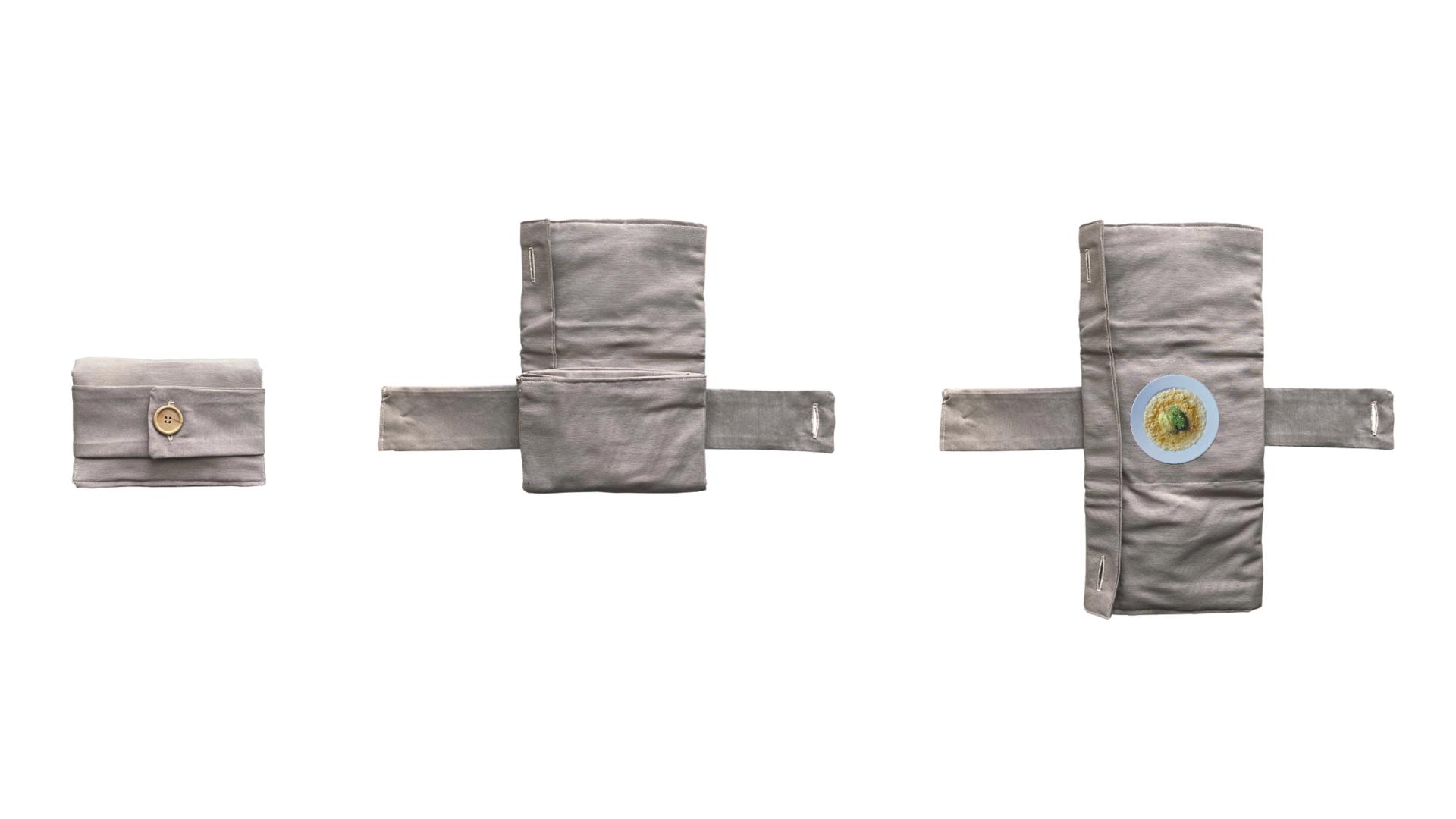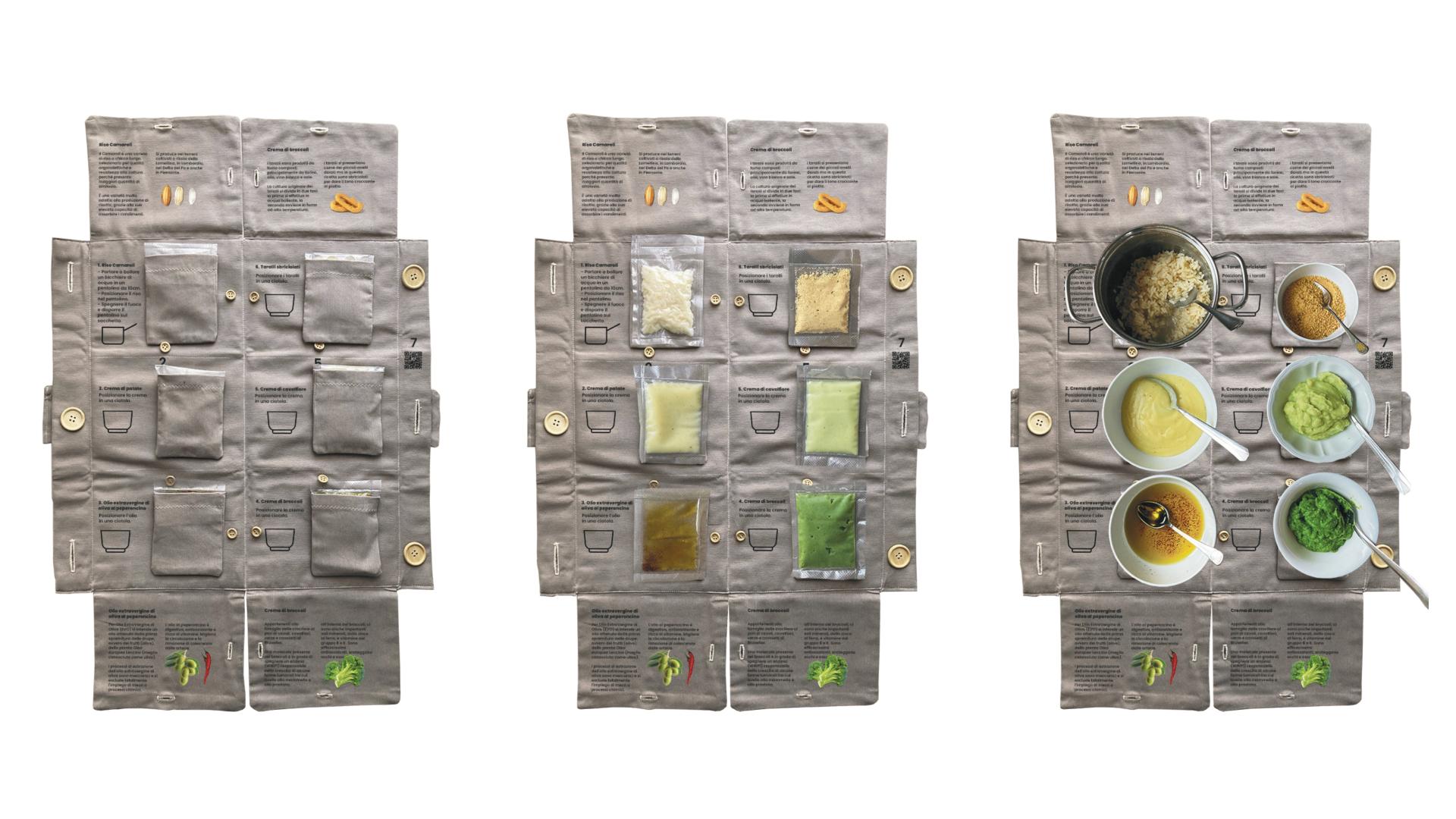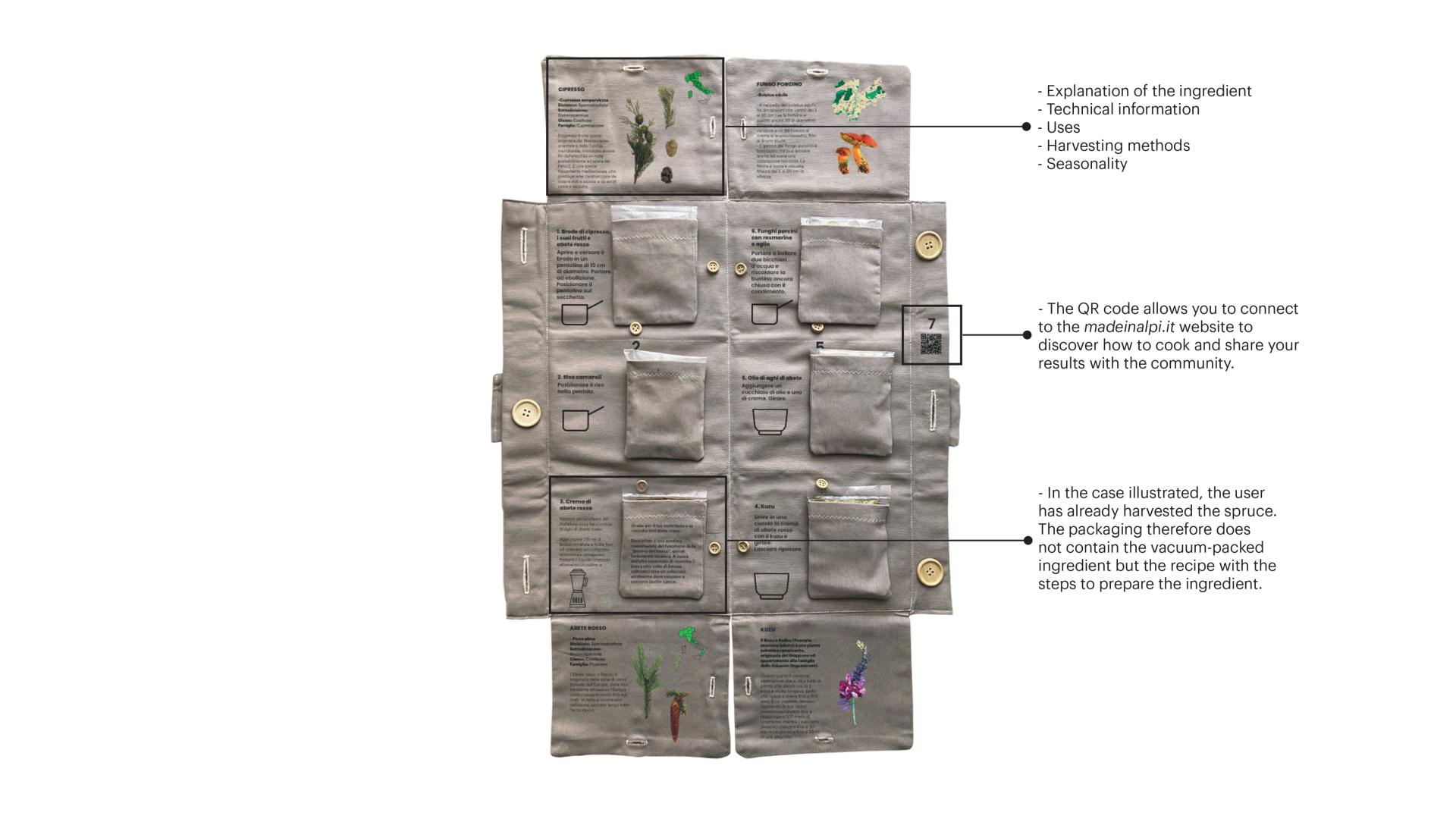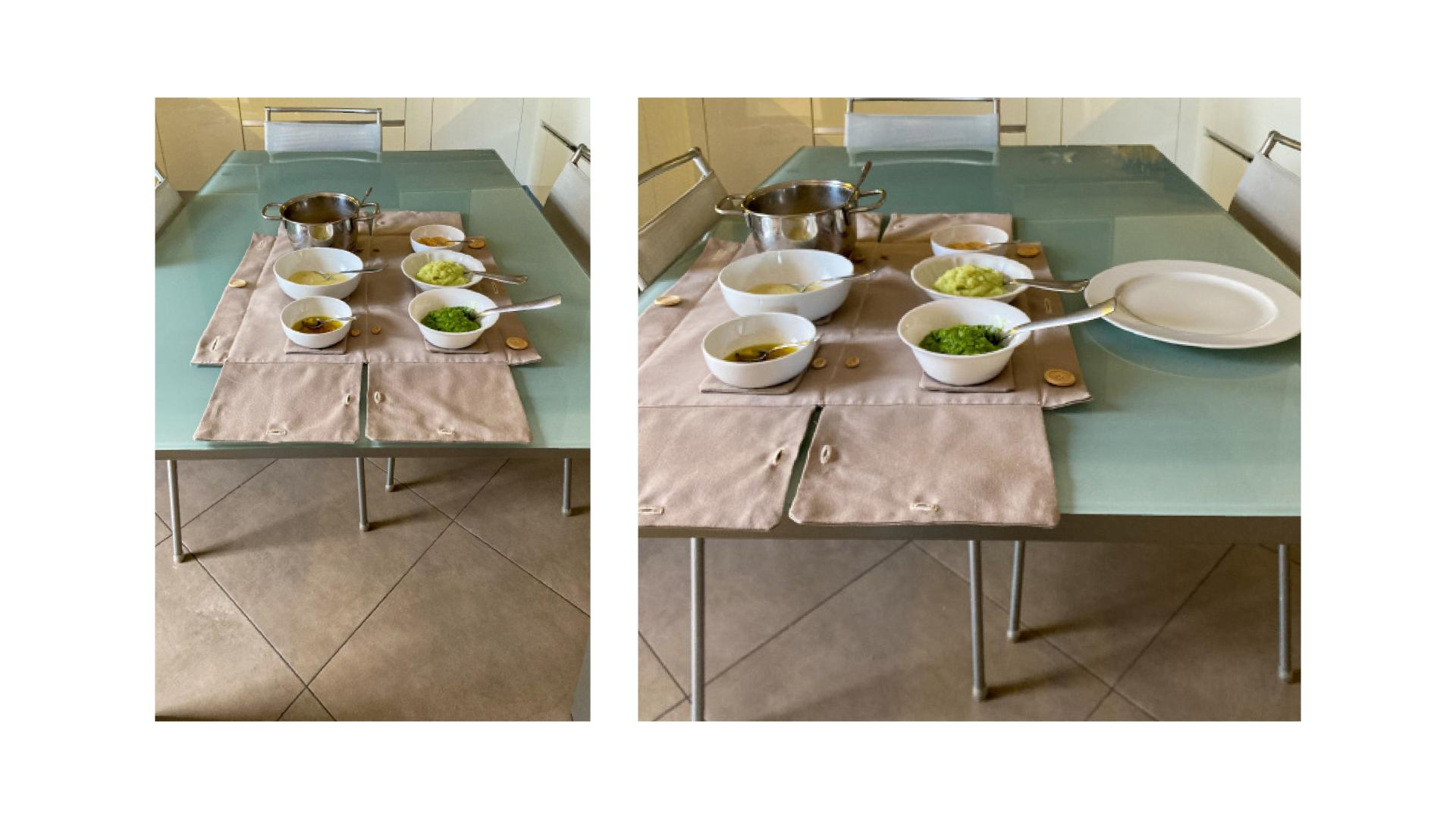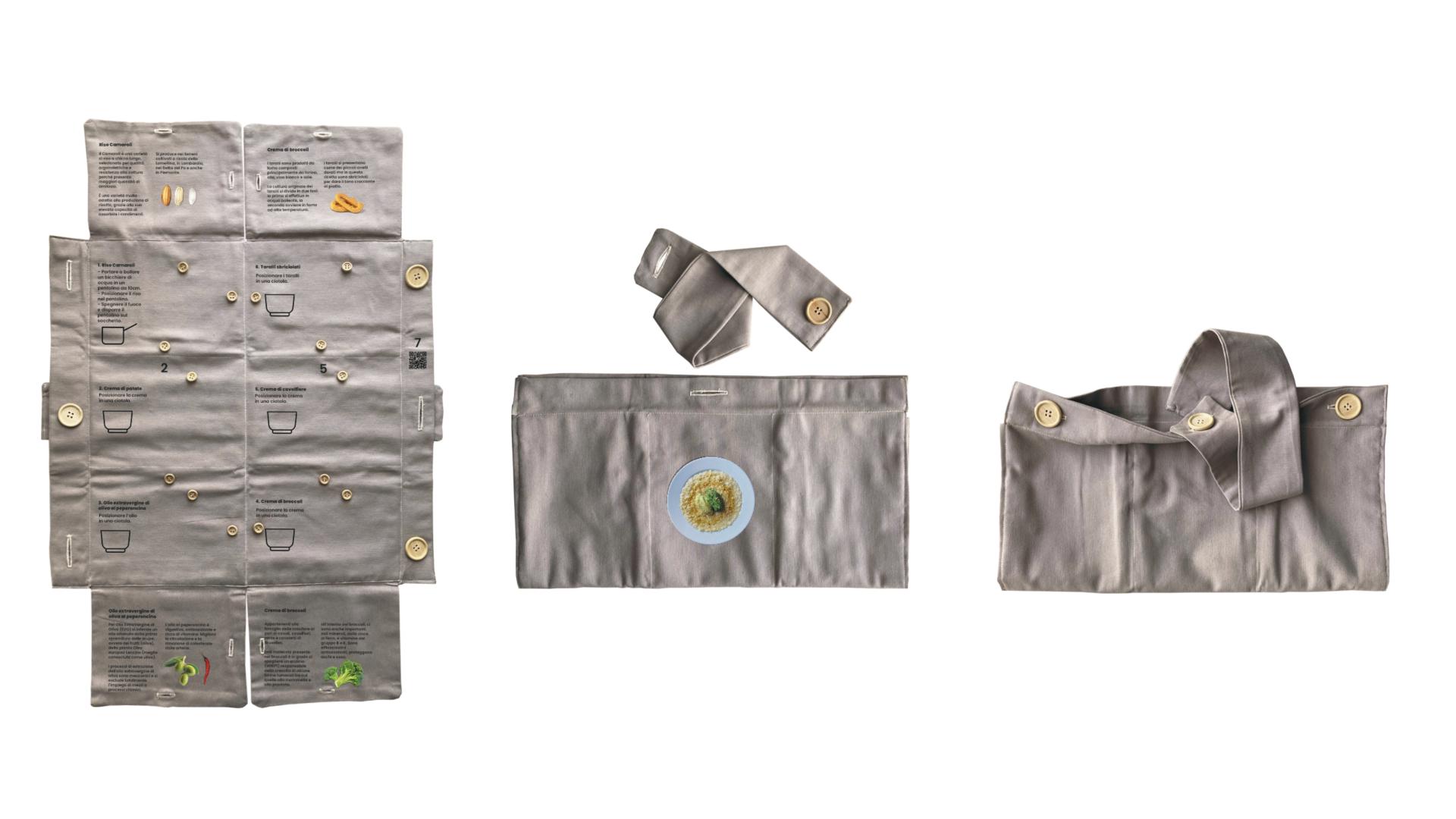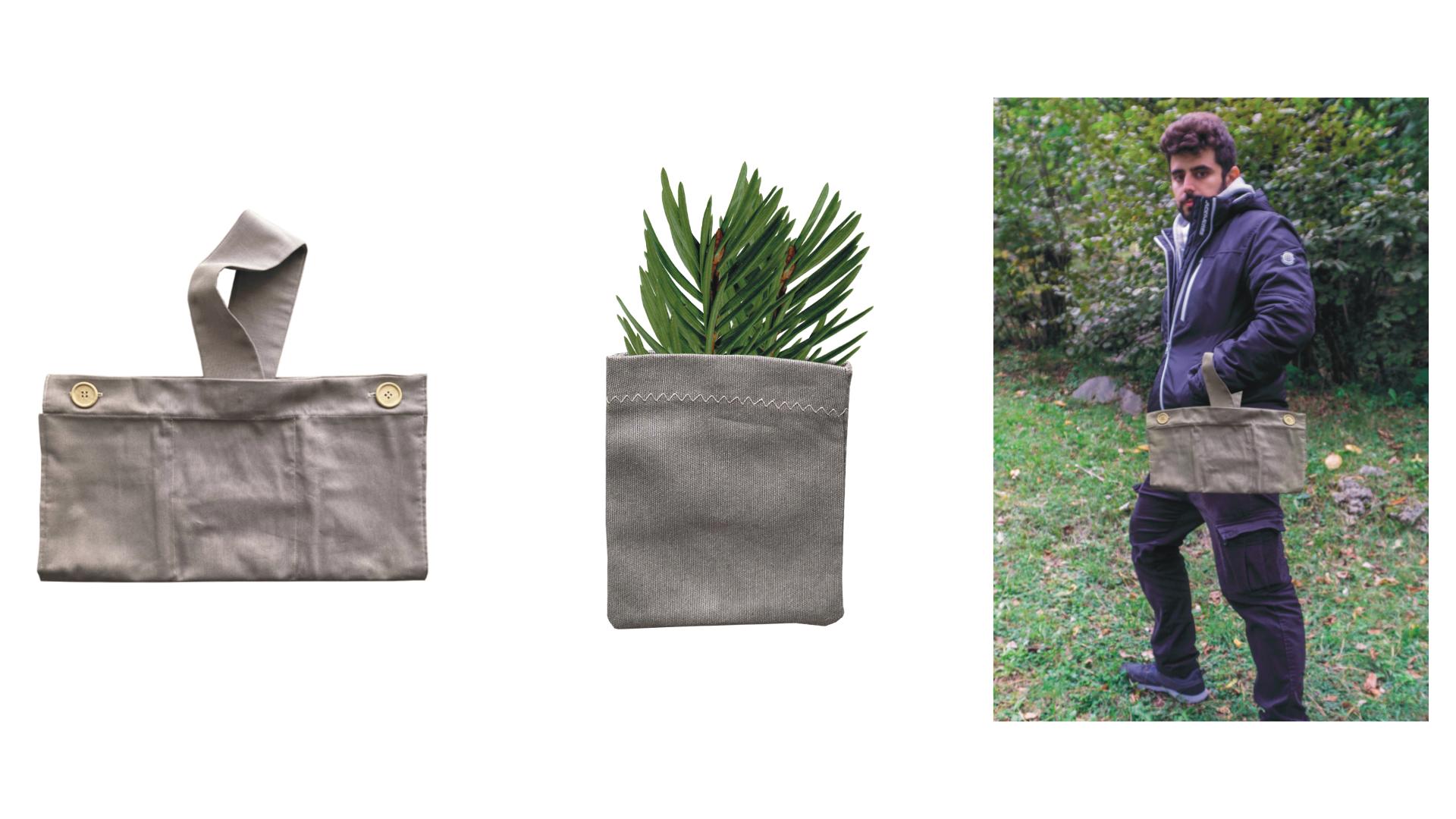Edible Landscapes
Basic information
Project Title
Full project title
Category
Project Description
Nowadays it is difficult to recognize natural food. The concept, based on personal experience, aims to re-establish a connection between the human being and the nature. Foraging becomes the focus of this dialogue. The project aims to stimulate and make the user more aware of the importance of the food that nature offers us. The concept, starting from a conservative foraging, plans to guide the user by transforming an outdoor experience into a domestic indoor one.
Geographical Scope
Project Region
Urban or rural issues
Physical or other transformations
EU Programme or fund
Which funds
Description of the project
Summary
Nowadays it is difficult to know the difference between natural and artificial food. Meals are often conditioned by time and packaged foods that do not convey values and emotions. The concept proposed, starting from a personal experience, is developed in the uncontaminated context of the mountains and aims to re-establish a connection between the human being, the environment and what it has to offer. Foraging becomes the focus of this dialogue as it requires the dynamic but respectful participation of the user and all his senses. The project aims to stimulate and make the user more aware of the importance of the food that nature offers us, in order to establish a proactive dialogue. Foraging is the new frontier of food sustainability, although it is an attitude that has always belonged to man and animals. It enhances spontaneous natural biodiversity and allows us to rediscover ancient places, flavors and traditions The form of foraging explored is conservation, which focuses on harvesting invasive species and those that in some way damage ecosystems. However, harvesting is closely linked to climate, altitude and seasonality. Although the activity allows people to increase their awareness of the environment, the proposed concept aims to take the foraging experience to the next step through a "dynamic recipe book" that aims to create a strong connection between the user and natural foods. After choosing the recipe and the ingredients, the product can be ordered online. In the packaging, the foraging ingredients are provided by information on uses and characteristics, with a map of areas where the food can be found and harvested. The design of the packaging aims to guide the user through all actions and to complete the recipe within the package. At the end of the dining experience, the proposed design allows and suggests the user to use it to go to the mountains and collect natural food in a sustainable way.
Key objectives for sustainability
The key objectives of the project mainly concern the reconnection between human beings and the environment. If experiencing nature was until now an experience to be made only outside and on site, with the proposed concept it becomes possible to explore and experience nature also from home by tasting, smelling and receiving information about places, traditions and ingredients. The dialogue between the actors can also be strengthened thanks to the design and the second life of the project which provides the tools to go back to nature and collect ingredients to be consumed at home.
Key objectives for aesthetics and quality
The proposed project is a resealable fabric packaging in which ingredients prepared using the vacuum technique are stored. The product is designed in fabric, precisely in recycled cotton, to ensure flexibility, ease of use and allows it to be reused several times. As the culinary experience takes place on the product itself, the fabric allows for increased thermal resistance and in case it is easily washed. At the beginning of the experience, the product has a shape of 20x15cm, later, during the cooking experience, the dimensions are 50x75cm. In spite of this, the dimensions have been tested and studied respecting the proportions and dimensions of standard tables in any domestic environment. The opening of the product is simple and intuitive for the customer as it only involves following the folding of the product itself. Inside the product there are bags attached with buttons that act as a support for the biodegradable sachets with the vacuum ingredients. The wooden buttons, designed to avoid the use of plastics or other heavy fasteners, are replaceable and recyclable without environmental damage. In addition, the distribution of the perimeter buttons allows the product to be closed at the end, transforming it into a shopper bag to be carried on the arm. The product, together with the inner bags, become the tools to be used to store produce during harvesting and foraging activities.
Key objectives for inclusion
Foraging is the activity of collecting plants (or parts of them), water or land mollusks and insects suitable for human consumption in the pristine territories of different natural environments. This means that, climate and seasonality permitting, it is an activity accessible to all. The project proposes further involvement also for those who cannot afford to physically explore untouched areas but want to taste, smell and discover natural elements. The starting target group is certainly lovers of uncontaminated food, but the concept is a tool to involve and bring in a wider target group. The proposed design is very simple. It turns the culinary experience into a sensory experience in which everyone can participate. As mentioned above, the form of foraging used is conservative. The concept therefore invites users to go out into nature and use the bag and the bags to collect natural elements to cook with. The result is definitely a work of co-design and collaboration between man and environment.
Physical or other transformations
Innovative character
The proposed concept respects the three dimensions well, creating a sustainable result that includes everyone. As far as sustainability is concerned, the foraging activity is based on sustaining nature's biodiversity. In addition, the conservative form aims to preserve the environment from harmful elements. The chosen material, recycled cotton, makes it possible to minimize industrial emissions from the production of new textiles. The use of vacuum cooking to prepare and preserve food maintains the properties of the food intact: the nutritional properties of the food are not lost thanks to the sachets which are able to preserve the food itself, avoiding oxidation. The proposed design allows the product to be used as a base and support for the experience, and at the end of the experience, to be used as a tool for outdoor harvesting in nature. In terms of aesthetics, the concept is very simple and understandable to all. The use of buttons recalls gestures common to all and simple to open-close. The graphics, hypothetically with sustainable printing, and the communication with writings, images and icons support and guide the user in every activity. Finally, the concept aims to reconnect human beings with nature. This means including a wide target group of users who are curious and ready to discover natural ingredients and elements. The product could be produced in small units, depending on the number of possible recipes. As the product is reusable, it would not need to be bought again, but only the ingredients would need to be ordered or collected. Maintaining the standard size, production could therefore be done manually without requiring industrial processes.

